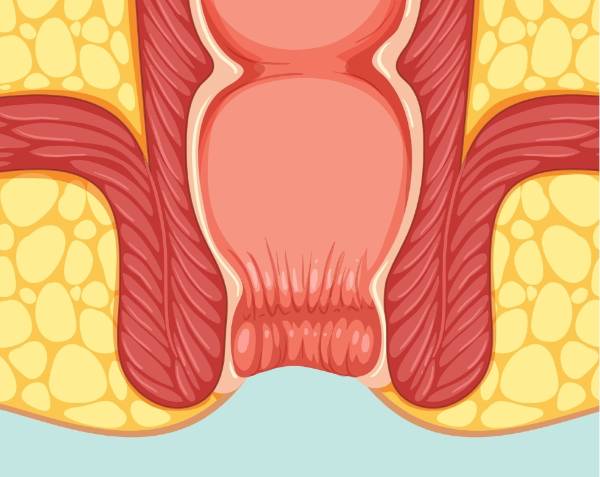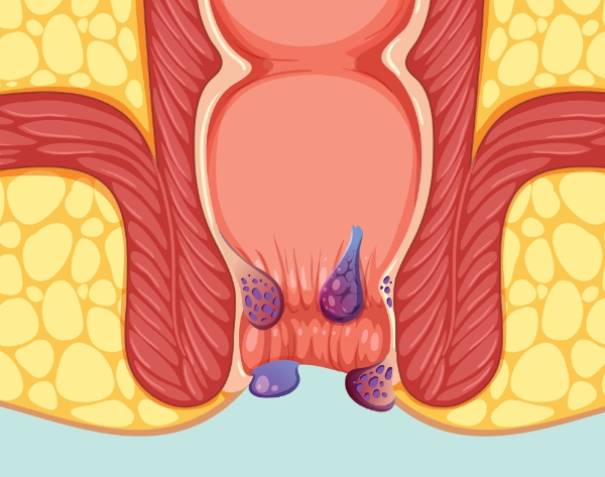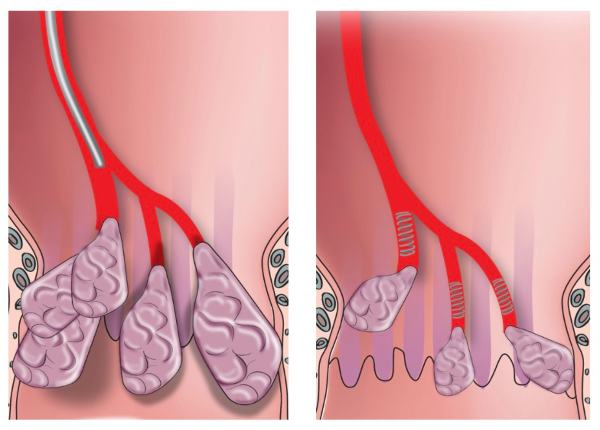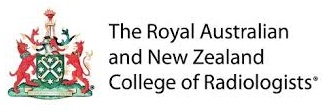HAEMORRHOIDAL ARTERY EMBOLISATION MELBOURNE
HAEMORRHOID TREATMENT
Learn about Haemorrhoidal Artery Embolisation including the procedure, benefits, risks and recovery:
HAEMORRHOIDAL ARTERY EMBOLISATION MELBOURNE
Source: Dr Philip Chan – MBBS, MMed (Radiology), FRANZCR, EBIR.
Interventional Radiologist.
WHAT IS A HAEMORRHOIDAL ARTERY EMBOLISATION
A Haemorrhoidal Artery Embolisation (HAE) is a new, minimally invasive treatment for persistent bleeding haemorrhoids.
A Haemorrhoidal Artery Embolisation is ideal for patients with bleeding haemorrhoids despite conservative treatment, and wish to try a less invasive treatment.

Normal

Haemorrhoids
Source: UCLA Health – Haemorrhoidal Artery Embolisation
HOW IS A HAEMORRHOIDAL ARTERY EMBOLISATION PERFORMED
A Haemorrhoidal Artery Embolisation is a minimally invasive operation which is performed through a 2-3 mm hole through an artery in the groin.
A microcatheter, a small hollow plastic tube, is carefully navigated into the haemorrhoidal artery under image guidance.
Once in position, coils are deployed and blood supply to the haemorrhoids is reduced.
The operation typically takes 45 minutes to an hour, and can be safely performed under sedation and local anaesthesia.

Before and after Haemorrhidal Artery Embolisation.
Source Images Wikipedia – Haemorrhidal Artery Embolisation before and after.
Source: Endovascular Today – Haemorrhoidal Artery Embolisation
WHO IS A SUITABLE CANDIDATE FOR A HAEMORRHOIDAL ARTERY EMBOLISATION
A Haemorrhoidal Artery Embolisation may be suitable for you if you have:
Bleeding haemorrhoids and have failed conservative treatment
Wish to avoid a major operation
A Haemorrhoidal Artery Embolisation only requires local anesthesia and sedation, has minimal risks, and has a quick recovery time compared to traditional open surgery.
ADVANTAGES OF HAEMORRHOIDAL ARTERY EMBOLISATION
A Haemorrhoidal Artery Embolisation procedure has the following advantages:
High technical success rates
Minimally invasive procedure – Short hospitalisation and recovery timeline
Less painful and well tolerated (when compared to traditional surgical techniques)
Low major complication rates (<1%)
Most side effects are mild and temporary
Allows early return to normal activities
Does not require bowel preparation
PREPARING FOR A HAEMORRHOIDAL ARTERY EMBOLISATION
Preparing for a Haemorrhoidal Artery Embolisation – Your doctor and the WIRES Radiology team will discuss with you the procedure process and hospital administration needs.
Investigations and tests – You may require more relevant investigations such as blood tests, ultrasound, CT or MRI as part of your preparation for the procedure. You may be referred for a colonoscopy to exclude bowel cancer.
Fasting and overnight hospital stay – Generally, you are required to fast for 6 hours before the procedure. Please prepare for an overnight hospital stay (even if you are expecting to be discharged the same day).
Driving – Have someone to drive you home after the procedure.
Medications – Your doctor will review your list of medications and advise which medications you may need to stop before the procedure and when you may resume taking them again.
RECOVERY – AFTER A HAEMORRHOIDAL ARTERY EMBOLISATION
Overnight hospital stay – Please prepare for an overnight hospital stay. Most patients can expect to go home the same day.
Pain management – You may experience some swelling and pain around the anus, which is usually worst in the first week.
You may have aching at the incision site. Take pain relief medication for soreness as recommended by your doctor.
Post embolisation syndrome – Post embolisation syndrome is caused by the body’s reaction to the operation. Patients often feel fatigued, have low grade fever, nausea, vomiting, low appetite, generalised muscle and joint aches – similar to having a cold without the head symptoms.
These symptoms are easily managed with paracetamol and ibuprofen, and should resolve after 7-14 days.
Activity – You will be advised avoid strenuous activity or lifting anything over 5 kilos. After the two week mark most patients can increase their activity levels.
Your doctor will discuss with you and answer any questions you may have in relation to your individual rehabilitation, activity, medication and recovery.
FREQUENTLY ASKED QUESTIONS
A Haemorrhoidal Artery Embolisation is generally a short 45 minutes to 1 hour procedure. For most patients it will be a day procedure whilst others will stay overnight in hospital for observation.
Light activities – Light activities can typically be resumed within two weeks following the procedure.
High-impact activities – We recommend avoiding high-impact activities for at least four weeks after the procedure.
Please discuss your rehabilitation with your doctor.
First month – After your initial recovery period of 1 month, most patients will have recovered from the procedural symptoms.
Ongoing relief – Recovery from hemorrhoid artery embolisation (HAE) is typically quick, with most patients resuming normal activities in approximately 14 days. You should avoid strenuous activities for at least a month and keep the dressing on the access site for two days.
Heavy lifting and strenuous activities should be avoided for the first month.
Risks – Like any medical procedure, a Haemorrhoidal Artery Embolisation carries certain risks. Potential risks may include but not limited to:
- Infection from the insertion site
- Bruising or injury in the insertion site
- Mild pain or fever following the procedure
- Temporary Rectal Bleeding: Slight bleeding after the procedure is possible, but usually resolves quickly.
- Anal Discharge: Mild anal discharge may also occur.
Your doctor will outline all the risks specific to your situation.
A Haemorrhoidal Artery Embolisation is usually well-tolerated procedure. It is a minimally invasive interventional radiology procedure performed under local anaesthetic.
Immediately after the procedure – After the procedure, some patients experience mild to moderate soreness, swelling or aching at the insertion site.
Most patients feel only mild discomfort or pressure as the catheter is inserted and guided the blood vessels. A local anesthetic is used at the insertion site, which helps minimise pain.
Post surgery – Most post-procedure pain is generally manageable with over-the-counter medications.
Your doctor will discuss and monitor a pain management plan you.
Haemorroidal Artery Embolisation is a safe and effective procedure, but like any medical treatment, it has potential side effects.
Common Side Effects may include:
Discomfort – You might experience mild to moderate pain or soreness in the treatment area for a few days after the procedure but improves with medication..
Temporary Rectal Bleeding – Some rectal bleeding after the procedure is possible.
Mild Anal Discharge – You might experience mild anal discharge.
Post-Embolisation Syndrome – Flu-like symptoms (fatigue, nausea, low fever, mild discomfort) may last a few days to a week.
Your doctor will fully explain the procedure and any potential side effects and mitigation strategies to make you as comfortable as possible during and after the procedure.


